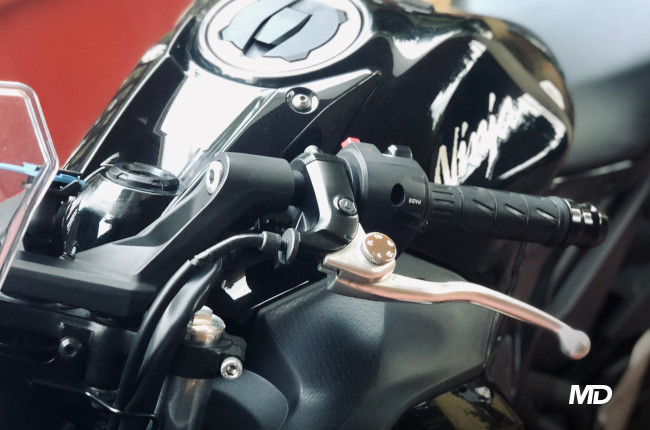
Riding a big bike comes with its own set of challenges. We’re certain that those of you who are proficient big bike users are all too familiar with the challenges of the U-turn. This is something that we as Filipinos go through every single day, as most of our roads rely on U-turn slots, as opposed to roundabouts similar to what we see in the U.S. and Europe.
As such, U-turns are an inevitable part of day-to-day driving, be it on two or four wheels. They’re especially challenging for big bikes, as it’s all too easy to lean just a tad too far, and having the bike’s weight overburden your strength, causing it to come crashing down. Now, we at MotoDeal.com.ph have spent countless hours honing our riding skills—both with the help of professional riding courses, as well as countless hours on the saddle. That said, here are a few tips to get you started in conquering the dreaded U-turn.
Be patient

First and foremost, be patient. Unlike scooters and underbones, big bikes tend to have a much larger turning radius, meaning they take up a lot more space when doing low speed maneuvers. Yes, you can compensate for this lack of turning radius by adding more lean, however, that’s an advanced skill and could easily result in a novice rider sending their bike hurtling to the ground. Instead, assume that you’ll be taking as much space as a car, and be patient while waiting for traffic around you to come to free up or come to a stop before you perform the maneuver.
Feather the throttle and clutch

There are a few basic elements when it comes to executing a smooth U-turn—throttle and clutch. You’re going to need to find that sweet spot, as if you were hanging on an incline. Slowly and smoothly find the friction zone, lean into the turn, counterbalance, and exit the U-turn with finesse. Make sure you’re not adding too little throttle, or too much clutch as you could easily stall the bike mid-turn, resulting in a drop, and a lot of embarrassment.
The rear brake is your friend

A pro tip that could go a long way in boosting your confidence when doing U-turns, and any other low speed maneuver for that matter, would be covering the rear brake. Dragging the rear brake through a slow turn adds a little more stability, keeping the bike under control, especially if you haven’t exactly mastered your throttle and clutch work just yet. Just make sure not to step on the rear brake too hard, as it could cause the bike to stall, and have you end up dropping the bike.
If in doubt, don’t do it

If you find all the tips above to be rather intimidating, then simply don’t do U-turns until you’re absolutely ready. You may want to enroll in an advanced big bike riding class, or spend a little more time practicing in an empty parking lot or wide open space. When it comes to riding big bikes, the stakes are a lot higher, as the bikes are a lot more expensive, more powerful, and the likelihood of injury is far greater than that of small bikes. Remember to never rush yourself into riding a big bike proficiently. It’s always better to invest time and money towards your skills rather than rushing into it.
Related Articles
-
Ride a naked sportbike? Get these 5 upgrades first / Featured Article
Here’s a quick list of 5 upgrades to your naked sportbike to enhance your riding experience.
-
Motorcycle 101: The inner workings of a slipper clutch / Featured Article
Slipper clutches are awesome as they make for more forgiving downshifts and a lighter clutch lever. Let’s take a closer look at them and see how they work.
-
3 reasons why the Ducati Monster is the best everyday Ducati / Featured Article
If you’re looking for a Ducati to ride on a daily basis, look no further than the new Ducati Monster.
-
5 things to remember when shopping for new motorcycle tires / Featured Article
Here are 5 things to consider when time comes for you to replace the tires on your motorcycle.
-
The Kawasaki Ninja 650 is still one of the best value for money sportbikes—here's why / Featured Article
Here are a few reasons why Kawasaki’s Ninja 650 is one of the best value for money middleweight sportbikes in the market.
Latest Features
-
Last-minute Christmas gift ideas for your rider friends and family / Featured Article
Struggling to think of gift ideas for your motorcyclist friends and family? Read on to get some inspiration this gift-giving season.
-
Ride a naked sportbike? Get these 5 upgrades first / Featured Article
Here’s a quick list of 5 upgrades to your naked sportbike to enhance your riding experience.
-
Motorcycle 101: The inner workings of a slipper clutch / Featured Article
Slipper clutches are awesome as they make for more forgiving downshifts and a lighter clutch lever. Let’s take a closer look at them and see how they work.







